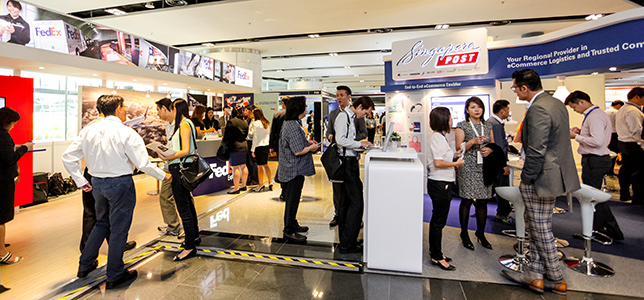 Asia Pacific has quickly become one of the fastest growing eCommerce markets in the world today. A young population, growing middle class, and increasing Internet connectivity have all created an extremely favorable environment for eCommerce brands to flourish in several markets in the region.
Asia Pacific has quickly become one of the fastest growing eCommerce markets in the world today. A young population, growing middle class, and increasing Internet connectivity have all created an extremely favorable environment for eCommerce brands to flourish in several markets in the region.
This trend has also created an opportunity for brands to establish a connection with consumers unlike ever before; consumers can now interact with multiple brands from the comfort of their own homes and shop for products or services of their choice from their very own couches. eCommerce companies are also fast realizing that to be successful, it is crucial for them to consistently deliver a positive online shopping experience for their customers.
Up till that point, the relationship between brand and consumer is purely digital. This gives rise to the importance of “last mile fulfilment,” as a defining factor of the remaining relationship between the two. For online shoppers, the “last mile” – where the product is delivered from the brand’s warehouse to the consumer’s doorstep – becomes the only direct touchpoint that consumers have with an eCommerce brand or service, positioning it as a highly important link.
eCommerce consumers are spoilt for choice these days. They can surf the World Wide Web and browse for products offered by vendors from across the globe. Besides product pricing, what really differentiates one eCommerce vendor from another is the customer experience that they offer. This “last mile,” or final stretch, now becomes a critical component in lifting a brand’s consumer satisfaction from ordinary to excellent – and something that marketers, and businesses as a whole need to strategically consider to gain a competitive advantage.
The question is – how can eCommerce companies ensure that they create a brand-defining experience at the “last mile” juncture, so that consumers keep coming back?
eCommerce brands first need to ensure that delivery times are met as promised. This may be easier said than done as they often have to accommodate last-minute requests from online shoppers, and cater to seasonal demands especially during peak periods like Valentine’s Day and Christmas. It is an understatement to say that sound logistics planning is critical, but eCommerce players also need to know that nothing spoils an online shopping experience more than waiting for goods that have already been paid for that never arrive or end up arriving late.
Equally important is to make the shopping experience as pleasant as possible for consumers. One example is for eCommerce players to ensure that it is easy and fuss-free to receive packages. More importantly, eCommerce brands need to do all this while ensuring that consumers do not pay a dime more.
Providing consumers with flexible delivery options is a great start to successful “last mile fulfilment.” A recent study has shown that, increasingly, when shopping online, consumers expect flexibility in receiving their packages where and when they need it. Multiple delivery methods, catering to different levels of urgencies, a choice of collection locations, advanced tracking facilities, consistent communication with consumers, and the option for consumers to change their mind on their purchase, are some ways that brands can provide flexibility to their shoppers.
A smooth and flexible delivery process entails providing consumers with various shipping options, telling them exactly when they are going to receive their package, providing a tracking number for visibility, and then, of course, on-time delivery at every consumer’s convenience. Effective, flexible delivery options that offer fast and hassle-free services may even play a role in motivating customers to make further purchases and encourage them to return for more shopping, driving towards building long-term customer relationships.
Another important aspect is a seamless goods return process. The key is to make it easy for consumers to return products that they found to be unsatisfactory in any way, and turn this potentially bad shopping experience into a positive one.
Naturally, a straight forward goods return process helps. However, what is more important for eCommerce operators to know here is that when products are returned, it does not necessarily mean that the unsatisfied customer is lost for good. In fact, friendly return policies can make consumers feel less pressured and more comfortable to make more purchases with the same eCommerce vendor in the future.
Finally, bringing a personalized, human touch to the “last mile” helps. Gestures such as including a note with the package to thank the customer, or inviting a customer to provide feedback on the shopping experience, are always viewed upon positively. They serve as a good reminder to consumers that both their business and opinion are truly valued.
While these methods do indicate increased complexity and costs in managing and fulfilling eCommerce orders, they can also significantly improve a brand’s positioning and bottom line. When done right, marketers and eCommerce businesses will be able to strategically leverage the “last mile” as a unique selling point that can help drive growth, as well as build and maintain customer brand loyalty.
By Team of LMFAsia 2016
Last Mile Fulfilment Asia (LMFAsia) 2016 will take place from 3rd to 4th March 2016 at Singapore EXPO. LMFAsia 2016 is the only international event dedicated to eCommerce fulfilment, where participants will deep dive into the topic of cross-border eCommerce.


